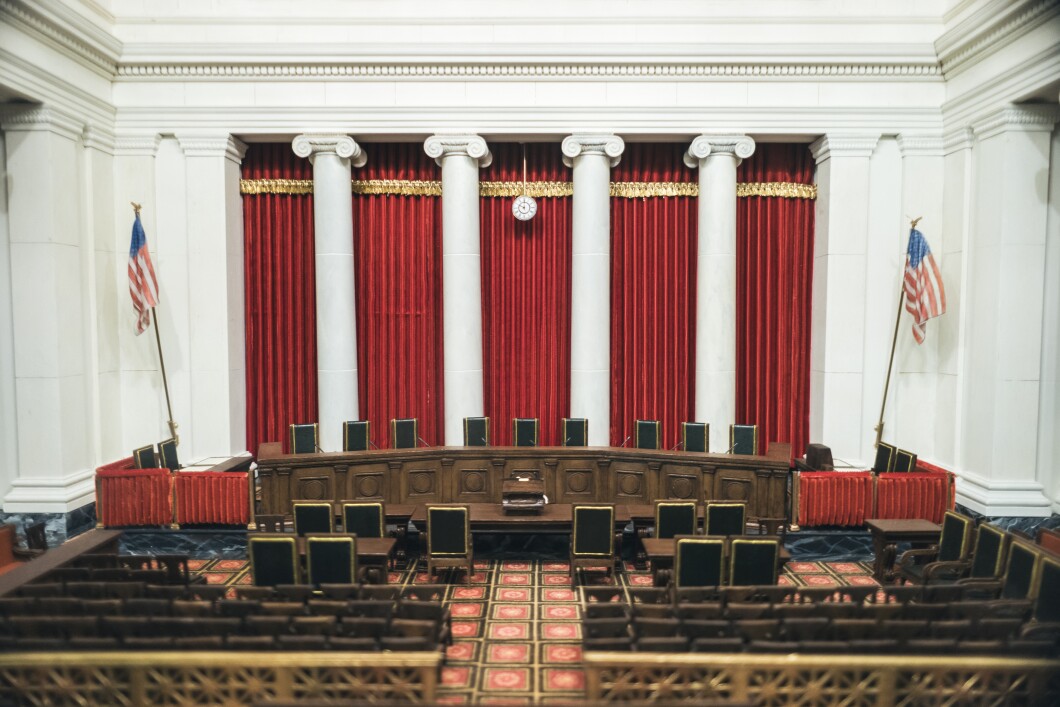
The Supreme Court is saving its most anticipated decisions for last as the justices have less than two weeks to decide on major disputes ranging from the fate of affirmative action to President Joe Biden’s plan to forgive millions of student loan borrowers’ debt.
The justices are left with 18 decisions to hand down before June 30, as they have typically wrapped up each term before the start of July. That prompted some users on the popular SCOTUSblog chatroom to raise concerns about whether the justices will finish the term on time.
BIDEN STEPS ONTO 2024 CAMPAIGN TRAIL IN TRUMP’S SHADOW

“So how many are left then? How on earth are they going to get all the rest of the opinions out in two weeks if they only give 2-3 decisions per day and only do 1-2 days per week? That’s not enough time???” one user named “question girl” asked Friday.
While the court has occasionally left it until July to release remaining opinions, for at least the past two terms, the justices held on to roughly 18 cases by this time in the season and still managed to release their complete list before they begin their July recess.
Adam Feldman, the founder of the blog Empirical SCOTUS, told the Washington Examiner that the high court in recent years has steadily been releasing more opinions toward the end of the term.
“The court is generally releasing more of its decisions in June or later now than ever in the past. The number has been as low as 8.5% of opinions in June or later in the mid-1960s,” according to Feldman, who tracks a range of Supreme Court statistics dating back to the 1800s.
Ever since Justice Elena Kagan was appointed by former President Barack Obama in 2010, Feldman said the percentage of cases released in June has steadily climbed from “a low of about 25% to now over 50%.”
Feldman said a “more cynical view” of the late release of opinions could be that the justices “want to deliver these opinions as close to the end of June so they can let any potential conflict over these decisions wane until October.”

Last May, Chief Justice John Roberts made the unprecedented move to order the placement of tall metal barricades outside the building after the leak of a draft opinion signaling the overturning of Roe v. Wade, which ultimately happened and resulted in widespread protests in the weeks following the leak and the eventual June 24 release of Dobbs v. Jackson Women’s Health Organization.
Feldman said the primary reason for releasing highly anticipated and landmark decisions at the end of the term is because “these decisions take longer to write.”
“The closely watched cases tend to be most divided, and there is often potential for vote switching after drafts, or at least justices may request rewrites to sign onto a decision after they provided a preliminary vote one way or the other in conference after oral arguments,” Feldman said.
Speaking before the American Law Institute last month, Roberts said the “hardest decision” he’s ever made was “whether to erect fences and barricades around the Supreme Court. I had no choice but to go ahead and do it.”
While public approval of the Supreme Court is still recovering since the Dobbs decision, standing at just 41% approval as of last month, the cases this term are unlikely to attract rebuke at the same intensity as last year.
Some of those major decisions include determining the fate of affirmative action in a challenge to race-based admission policies at Harvard University and the University of North Carolina at Chapel Hill, which were alleged to be discriminatory against Asian American applicants.
Also under consideration is President Joe Biden’s plan to provide up to $20,000 in student loan relief under his debt forgiveness program introduced last year.
A major First Amendment case is also on the table, surrounding LGBT rights and religious freedom. The case deals with a challenge to a public accommodations law in Colorado, which website designer Lorie Smith said violates her constitutional rights of free speech by requiring her to build wedding websites for same-sex couples despite her personal objections.
Another religious rights challenge is expected in a dispute surrounding a Christian mail carrier who claims he was denied religious accommodations when he was told to work on Sundays.
CLICK HERE TO READ MORE FROM THE WASHINGTON EXAMINER
Justices will also have to choose if they decide or dismiss a case brought by North Carolina Republicans asking them to embrace an obscure legal argument that legal experts say could strip state courts of the power to strike down certain election laws enacted by state legislatures.
The next day for Supreme Court opinions will be Thursday, June 22.






